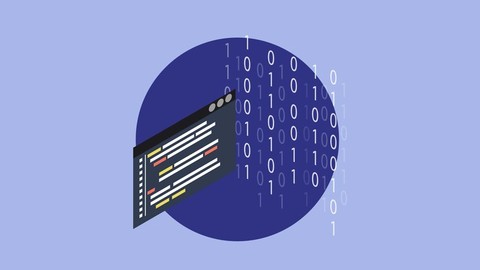
Become a MEAN Stack Developer: MongoDB; Express;Angular;Node
Become a MEAN Stack Developer: MongoDB; Express;Angular;Node, available at $54.99, has an average rating of 4.1, with 84 lectures, based on 225 reviews, and has 24650 subscribers.
You will learn about Build a MEAN Stack application Setup a Mean Stack Development Environment Create a new Angular 6 Project Create a new Angular 6 Component Edit a Component Create a MongoDBb database Create a MongoDB Schema Start and Stop MongoDB server Use nodemon to manager node server Create a node and express backend API server Create a package json file Define Routes Test Routes Use Postman to interact with backend server Implement Middlewares in your project Create interaction between route and mongodb schema Understand Observable Subscribe to an observable Understand RXJS Add forms to components Use various Angular ng directives Install and use Bootstrap Creating various http methods This course is ideal for individuals who are Beginners to MEAN Stack development or Novice Programmers or Novice developers It is particularly useful for Beginners to MEAN Stack development or Novice Programmers or Novice developers.
Enroll now: Become a MEAN Stack Developer: MongoDB; Express;Angular;Node
Summary
Title: Become a MEAN Stack Developer: MongoDB; Express;Angular;Node
Price: $54.99
Average Rating: 4.1
Number of Lectures: 84
Number of Published Lectures: 84
Number of Curriculum Items: 84
Number of Published Curriculum Objects: 84
Original Price: $94.99
Quality Status: approved
Status: Live
What You Will Learn
- Build a MEAN Stack application
- Setup a Mean Stack Development Environment
- Create a new Angular 6 Project
- Create a new Angular 6 Component
- Edit a Component
- Create a MongoDBb database
- Create a MongoDB Schema
- Start and Stop MongoDB server
- Use nodemon to manager node server
- Create a node and express backend API server
- Create a package json file
- Define Routes
- Test Routes
- Use Postman to interact with backend server
- Implement Middlewares in your project
- Create interaction between route and mongodb schema
- Understand Observable
- Subscribe to an observable
- Understand RXJS
- Add forms to components
- Use various Angular ng directives
- Install and use Bootstrap
- Creating various http methods
Who Should Attend
- Beginners to MEAN Stack development
- Novice Programmers
- Novice developers
Target Audiences
- Beginners to MEAN Stack development
- Novice Programmers
- Novice developers
MEAN, a free, open-source, full-stack solution for MEAN applications. MEAN combines MongoDB, Express.js, AngularJS, and Node.js into a single, fullstack solution for JavaScript development.�
This course introduces development techniques that capitalise on the strengths of every layer in the MEAN stack, using a simple shopping list application project that has a Backend server side Api built with Node , Express and MongoDB and a Frontend client built with angular 6 that will exchange with the backend Api . Data will be exchanged between a browser based client and an API backend service . You will learn the essential concepts of the MEAN stack .
Learn how to create a component and a form for users to add new items and also to edit items. The front end Angular Client will display data stored from the backend service. These techniques can be reused and recombined in your own MEANbased web applications.
What we will cover includes:
- Installing and setting up your MEAN development environment
- Configuring Angular Component with a form to add new items and also to edit existing items
- Creating http methods
- Displaying stored items from databasse
- Learn how to connect your Angular Frontend to a NodeJS & Express & MongoDB Backend
- Installing and working with MongoDB and Node.js
- Implementing a MongoDB schema�
- Defining routes
- Using Postman to interact with backend API
- Using nodemon to run server
- Implementing middleware
- Subscribing to Observables
- Creating a data service
- Injecting service into component
- Editing component
- Nesting Component
Course Curriculum
Chapter 1: Mean Stack Introduction
Lecture 1: Introduction
Lecture 2: What is Mean Stack
Lecture 3: What is JSON
Lecture 4: JSON Syntax
Lecture 5: Creating a JSON document
Chapter 2: Installing Node
Lecture 1: What is Node
Lecture 2: Installing Node
Lecture 3: What is Npm
Lecture 4: Updating npm
Lecture 5: Basic npm commands
Lecture 6: Global Objects
Lecture 7: Synchronous vs Asynchronous
Lecture 8: Installing visual studio code
Chapter 3: Installing MongoDB
Lecture 1: What is MongoDB
Lecture 2: Download and Install MongoDB on Windows
Lecture 3: Modifying environment variables
Lecture 4: Creating a storage directory for MongoDB
Lecture 5: Installing MongoDB on Macs
Lecture 6: Starting and stopping MongoDB server
Lecture 7: MongoDB Data types
Lecture 8: MongoDB vs RDBMS
Chapter 4: Basic MongoDB CRUD Operations
Lecture 1: Creating a database
Lecture 2: Dropping a database
Lecture 3: Inserting Documents into MongoDB
Lecture 4: Querying a document in MongoDB
Lecture 5: Updating a document
Lecture 6: Deleting a document
Chapter 5: Introduction to Git
Lecture 1: What is Git
Lecture 2: What is Github
Lecture 3: Basic Git Architecture
Lecture 4: Git workflow
Lecture 5: Retrieving specific configuration settings
Lecture 6: Installing Git
Lecture 7: Basic Git Configuration
Lecture 8: Using Git help
Chapter 6: Some Important Keywords
Lecture 1: What is HTTP
Lecture 2: What is a URL
Lecture 3: What is an API
Lecture 4: Angular Buzz words
Lecture 5: What is MVC
Lecture 6: What is a callback
Lecture 7: What is an Arrow Function
Chapter 7: Creating a MEAN Stack Application- Part 1 :Building Server Side API
Lecture 1: What we will create
Lecture 2: Creating project directories
Lecture 3: Initialising the project
Lecture 4: Installing dependencies
Lecture 5: Creating the main file
Lecture 6: Connecting to MongoDB
Lecture 7: Installing node monitor
Lecture 8: Testing a route
Lecture 9: Creating a directory for route and model
Lecture 10: Introduction to Middlewares
Lecture 11: Adding Middlewares
Lecture 12: Adding Routes
Lecture 13: Creating a MongoDB schema
Lecture 14: Route and Schema interaction -Part 1
Lecture 15: Route and Schema interaction -Part 2
Lecture 16: Introduction to Postman
Lecture 17: Route and Schema interaction -Part 3
Lecture 18: Route and Schema interaction -Part 4
Chapter 8: Creating a MEAN Stack Application- Part 2 :Building Frontend with Angular 6
Lecture 1: Setting up Development Environment
Lecture 2: Creating a new Angular 6 Project
Lecture 3: Serving your application
Lecture 4: Editing your angular component
Lecture 5: Creating a new Component
Lecture 6: Introduction to Observables
Lecture 7: Introduction to RXJS
Lecture 8: Configuring the component
Lecture 9: Configuring a Data Service
Lecture 10: Injecting service into component
Lecture 11: Nesting an Testing Component
Lecture 12: Displaying Items
Lecture 13: Installing Bootstrap
Lecture 14: Configuring Component -Part 1
Lecture 15: Configuring Component -Part 2
Lecture 16: Configuring Component -Part 3
Lecture 17: Configuring Component -Part 4
Lecture 18: Implementing Adding a new item
Lecture 19: Implementing deleting an item
Lecture 20: Adding Edit form -Part 1
Lecture 21: Adding Edit form -Part 2
Lecture 22: Enforcing required fields input
Lecture 23: Adding a checkbox function
Lecture 24: Thank You
Instructors
-

Bluelime Learning Solutions
Making Learning Simple
Rating Distribution
- 1 stars: 7 votes
- 2 stars: 3 votes
- 3 stars: 40 votes
- 4 stars: 71 votes
- 5 stars: 104 votes
Frequently Asked Questions
How long do I have access to the course materials?
You can view and review the lecture materials indefinitely, like an on-demand channel.
Can I take my courses with me wherever I go?
Definitely! If you have an internet connection, courses on Udemy are available on any device at any time. If you don’t have an internet connection, some instructors also let their students download course lectures. That’s up to the instructor though, so make sure you get on their good side!
You may also like
- Digital Marketing Foundation Course
- Google Shopping Ads Digital Marketing Course
- Multi Cloud Infrastructure for beginners
- Master Lead Generation: Grow Subscribers & Sales with Popups
- Complete Copywriting System : write to sell with ease
- Product Positioning Masterclass: Unlock Market Traction
- How to Promote Your Webinar and Get More Attendees?
- Digital Marketing Courses
- Create music with Artificial Intelligence in this new market
- Create CONVERTING UGC Content So Brands Will Pay You More
- Podcast: The top 8 ways to monetize by Podcasting
- TikTok Marketing Mastery: Learn to Grow & Go Viral
- Free Digital Marketing Basics Course in Hindi
- MailChimp Free Mailing Lists: MailChimp Email Marketing
- Automate Digital Marketing & Social Media with Generative AI
- Google Ads MasterClass – All Advanced Features
- Online Course Creator: Create & Sell Online Courses Today!
- Introduction to SEO – Basic Principles of SEO
- Affiliate Marketing For Beginners: Go From Novice To Pro
- Effective Website Planning Made Simple




















